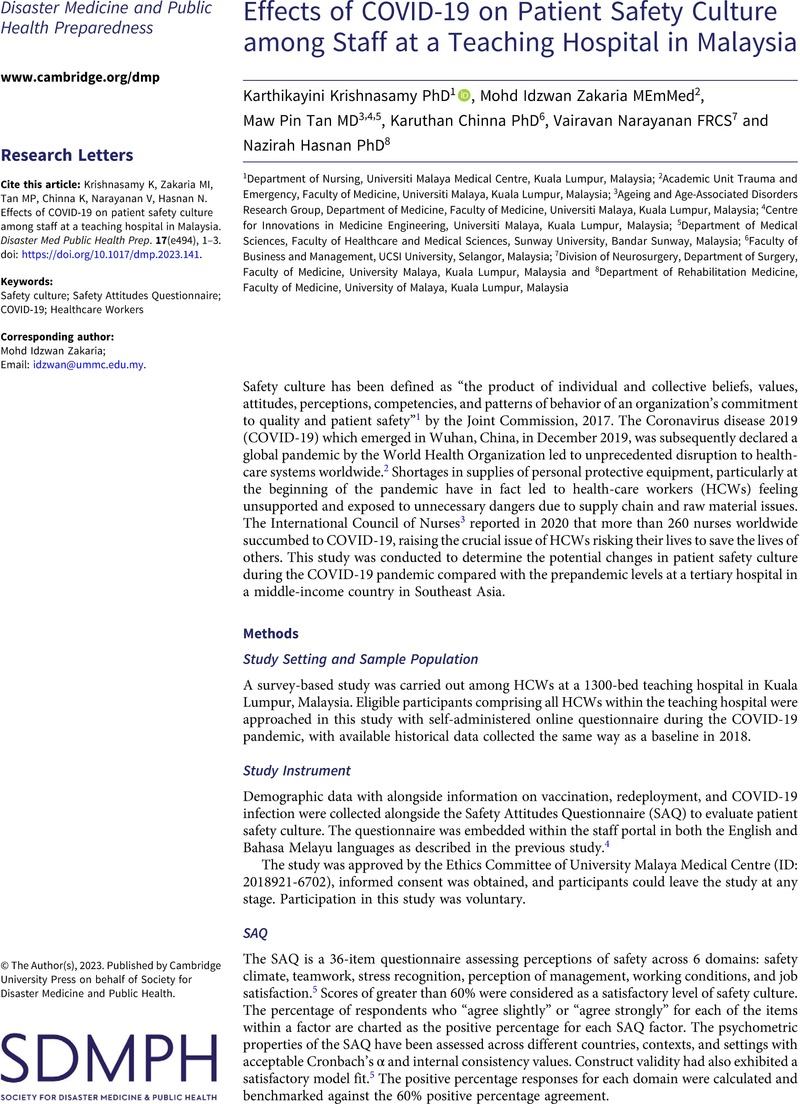No CrossRef data available.
Article contents
Effects of COVID-19 on Patient Safety Culture among Staff at a Teaching Hospital in Malaysia
Published online by Cambridge University Press: 25 September 2023
Abstract

- Type
- Research Letters
- Information
- Copyright
- © The Author(s), 2023. Published by Cambridge University Press on behalf of Society for Disaster Medicine and Public Health


